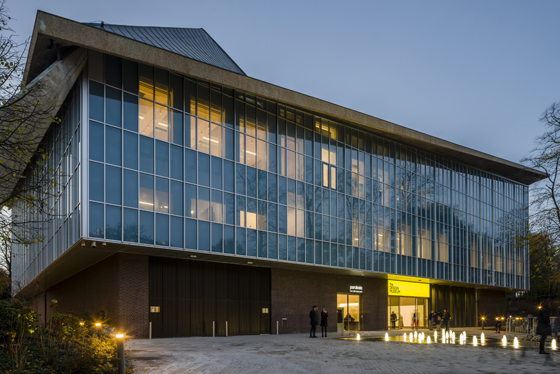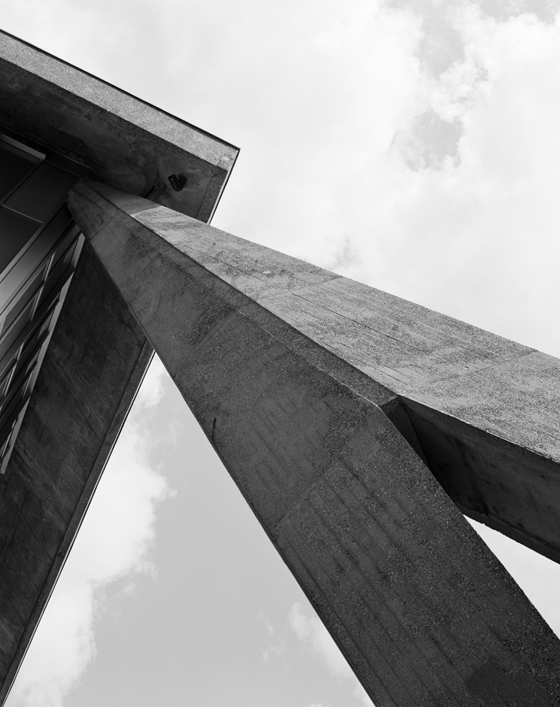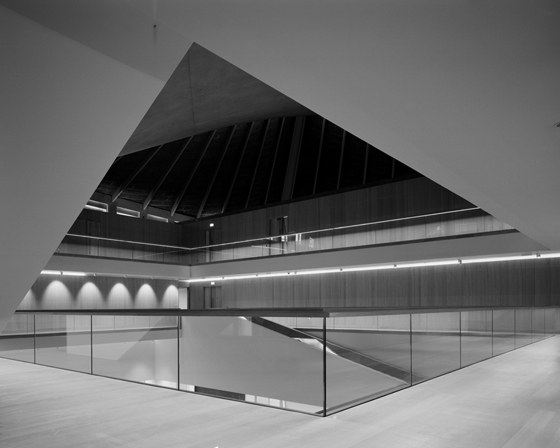Larging It: London's new Design Museum
Texte par Klaus Leuschel
Bern, Suisse
11.01.17
The former Commonwealth Institute building in London's Kensington, replete with iconic copper roof, becomes home to the latest incarnation of the Design Museum.
The large-scale sculpture that is the former Commonwealth Institute to the south of Holland Park. Photo: Gravity Road

The large-scale sculpture that is the former Commonwealth Institute to the south of Holland Park. Photo: Gravity Road
×Paraphrasing a quote from Andy Warhol: “The most beautiful thing in New York is MoMA. The most beautiful thing in Vienna is MAK. The most beautiful thing in Seoul is the Dongdaeum Design Plaza. Berlin and Moscow don't have anything beautiful yet.”
And London? Well, it used to have a nice little white cube at Shad Thames, which “did not meet the Design Museum’s ambitions”, as Deyan Sudijc, its director, put it. He was hired by design grandee Sir Terence Conran (who has been credited with introducing design to the British public at large), in 2006 to, among other things, find a new home for the institution.
John Pawson's signature style consists of simple, reduced forms, created mainly from wood, which emphasise further the cathedral-like character of the space, one which is informed by its architectural shell. Photos: Gareth Gardner
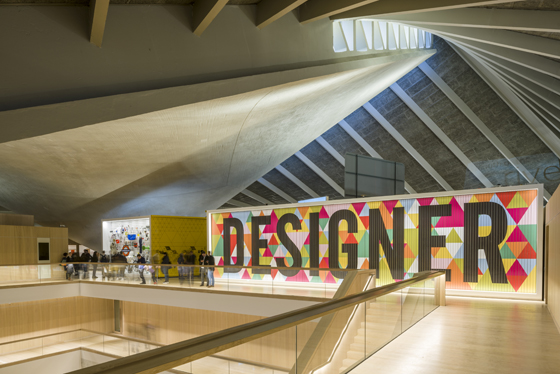
John Pawson's signature style consists of simple, reduced forms, created mainly from wood, which emphasise further the cathedral-like character of the space, one which is informed by its architectural shell. Photos: Gareth Gardner
×It is widely acknowledged among curators that architecture and design have been traditionally the most difficult of creative and cultural forms to display. Nevertheless, Sudijc and his team proved at their white cube on the Thames “how a permanent collection could engage with the public, how we could become a centre for learning and nurture the next generation of design talent.”
After exploring various sites for the Design Museum’s new home, the former Commonwealth Insitute, completed in 1962, became a possibility, and Sudijc must have immediately recognised the extraordinary opportunity to bring a very special building back to life. With the “Boilerhouse”, the first site of the Design Museum in the basement of London’s V&A Museum, which opened its doors in 1982, the new premises in West Kensington are now the third site – not just another place, but a place that expresses the growth “from a niche player into an important international voice in design and architecture”.
"As little design as possible" (Dieter Rams): view of the lobby from the first floor. In the foreground we see the stairway leading to the auditorium in the basement, with one of the Design Museum's two shops in the background. Photo: Gareth Gardner
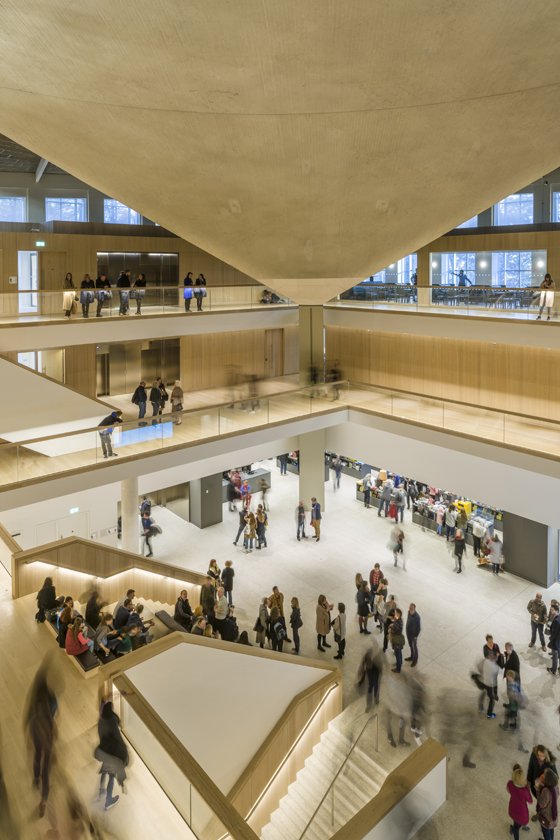
"As little design as possible" (Dieter Rams): view of the lobby from the first floor. In the foreground we see the stairway leading to the auditorium in the basement, with one of the Design Museum's two shops in the background. Photo: Gareth Gardner
×Sir Terence Conran called it “a cathedral of design” at the opening’s press conference, adding: “I do not know whether it is the right word, but when I came in here for the first time, that was what I felt.” A token of esteem for the structure’s shell, or “envelope” – a term favoured by architect Bernard Tschumi.
The well-connected Sudjic created a Champions-League-like team: OMA developed and built three towers with luxury apartments for the company that owns the site. OMA, Allies and Morrison, together with Arup, also renovated the Commonwealth Institute’s spectacular roof and distinctive facade. Rotterdam-based WEST 8 landscape architects created the exterior, interweaving the “vestibule” with the Design Museum, which now highlights the entrance to the park in its background.
The facade: restyled with the approval of architectural conservationists. The new Design Museum and the "skyline" in West Kensington. Photos: Gareth Gardner (top) and Hélène Binet (above)

The facade: restyled with the approval of architectural conservationists. The new Design Museum and the "skyline" in West Kensington. Photos: Gareth Gardner (top) and Hélène Binet (above)
×But the most important decision was the selection of John Pawson, who was charged with the the interior of the museum. Famous for his love of clear spaces, Pawson qualified via an OJEU process, making it through from a longlist of 100 or so offices. Importantly, he shared OMA’s Reinier de Graaf ambition to “preserve the building”.
Pawson set up a simple programme of 10,000 square metres of space (three times the size of the old museum), which stretches over six floors, emphasising the “extraordinary atrium,” as Pawson himself puts it. (The sixth floor is the basement of the auditorium, with 202 seats.) Wooden surfaces, including 2,300 square metres of oak flooring, add to a design that clearly strives for a cathedral-like atmosphere.
Pure Brutalism twice over: the structure is dramatised even more starkly in black-and-white photography, giving Pawson's restrained interior design the impression of always having been there. Photos: Hélène Binet
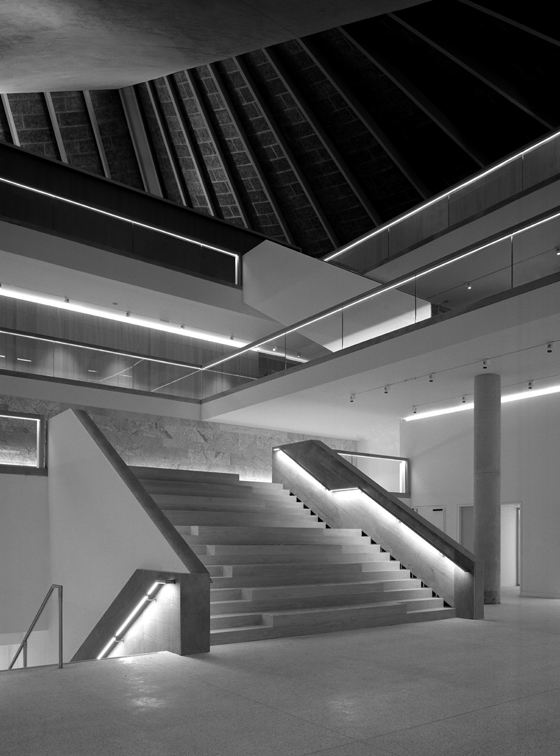
Pure Brutalism twice over: the structure is dramatised even more starkly in black-and-white photography, giving Pawson's restrained interior design the impression of always having been there. Photos: Hélène Binet
×Only the stainless-steel handrails in the middle of the stairs, from the atrium down to the auditorium, are a little irritating. When asked about these, Pawson thought quietly to himself for moment before saying, “I was never really happy with the handrails. You know, there are fire regulations in the UK that force architects to provide a handrail in the centre.” Pawson proves himself here to be a true gentleman, as walking through stations of London’s Tube system reveals that safety handrails aren’t always installed as standard.
A few numbers. According to new figures from the Office for National Statistics, a record-breaking 31.5 million international and UK tourists visited London in 2015. The Design Museum is hoping to attract 650,000 visitors a year thanks to its new site, which is much closer to the city and is 25 minutes’ walking distance to both the V&A and the Serpentine Gallery. Compared to the whopping 4.7 million visitors that Tate Modern gets, this may not seem like much. But compared also to other institutions that showcase design – like Die Neue Sammlung in Munich (300, 000 visitors annually) or New York’s MoMA, whose legendary “Italy – The New Domestic Landscape” show in 1972 wasn’t able to achieve such a figure – and it doesn’t seem that bad .
Indeed, the Design Museum at Shad Thames did a lot to broaden the audience for architecture and design. Fashion designer Paul Smith (2013–14) attracted more visitors than Dieter Rams (2010), as did David Bowie and Pink Floyd for the V&A, where they attract more visitors than, say, Ove Arup. But all this does not imply that Stella McCartney’s work is more important than that of, for example, Jonathan Ive or Shiro Kuramata. It just means that reasonable ticket prices are mainly the result of a clever exhibition mix, as the total number of visitors per year is the result of attractive choices.
And here the new Design Museum might well perform even better. Remember the slogan “Vorsprung durch Technik”, created as expression for the supremacy of German engineering? “Designed in Britain” might be the new cri de coeur. Think of such exemplary British designers such as Ron Arad, Jonathan Ive and Jasper Morrison; world-class architects like Pawson, David Chipperfield and the High Tech crowd; innovative manufacturers like Dyson and Vitsoe; premium car-makers such as Aston Martin, Bentley, Jaguar, Land Rover, McLaren and Rolls Royce; fashion brands ranging from Burberry to Paul Smith; world-renowned, first-class educational institutions, such as the Architectural Association, Royal College of Art, and so on. The global reception of architecture and design might well depend on what is showcased, discussed or questioned in London, with the Design Museum centre-stage.
Clearly visible from Kensington High Street: the shop of the Design Museum, located on the ground floor of one of the three buildings (OMA). Photo: Luke Hayes
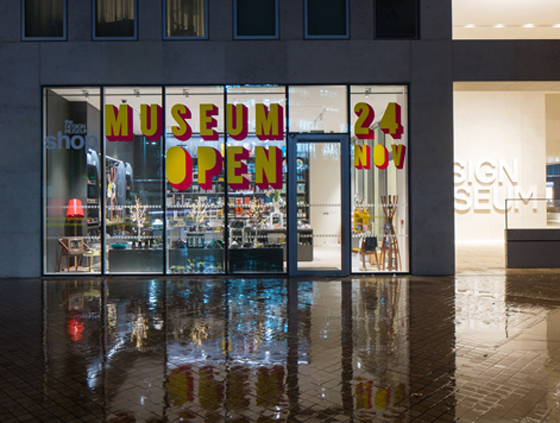
Clearly visible from Kensington High Street: the shop of the Design Museum, located on the ground floor of one of the three buildings (OMA). Photo: Luke Hayes
×The Design Museum’s definite article may eschew the traditional form of the British understatement, yet, at the same time, and as Deyan Sudijc has made clear, its role isn’t to be definitive and is certainly not limited in scope to the UK creative scene. Rather than a presentation of “The Best of British”, it’s a platform for a globalised design scene. In short, it’s OUR design museum.
© Klaus Leuschel for Architonic





